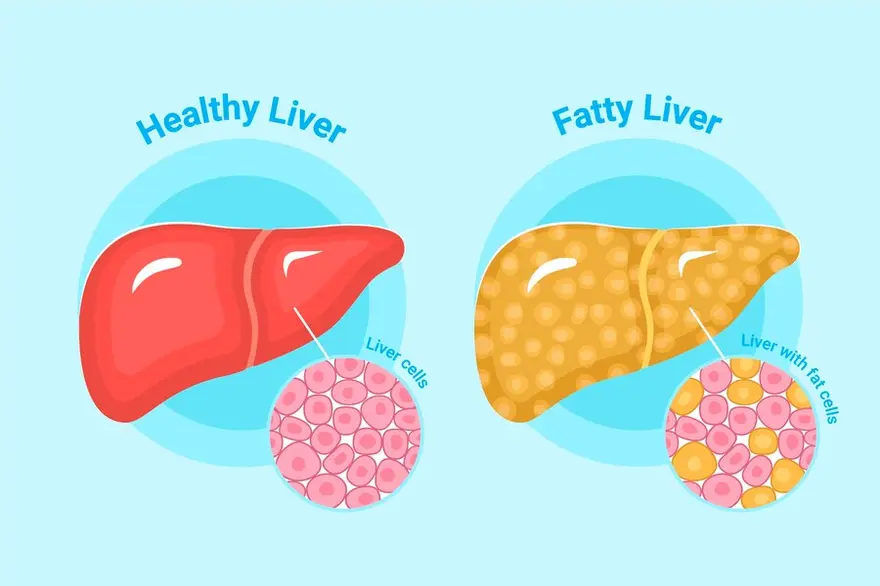atelectasis symptoms
Understanding Atelectasis: Symptoms, Causes, Treatment, and Types
What is atelectasis? Atelectasis is a lung condition characterised by the collapse of part or all of a lung. It occurs when the airways or air sacs in the lungs fail to fully expand or collapse. This collapse can be partial or complete and is typically caused by blockage of the air passages or pressure on the lung. Who is at risk for atelectasis? Several factors increase the risk of developing atelectasis: Surgery, particularly abdominal or thoracic surgery, can lead to atelectasis due to anaesthesia, muscle relaxants, and postoperative pain. Conditions that limit mobility, such as prolonged bed rest, increase the risk, as changing positions helps prevent atelectasis. Lung diseases like chronic obstructive pulmonary disease (COPD) or those causing scarring can impair lung function, contributing to atelectasis. Smoking and advanced age are additional risk factors for atelectasis. What are the types of atelectasis? There are two main atelectasis types: Obstructive (Resorptive) Atelectasis: This type occurs when there is a blockage in the airways, preventing air from reaching the lung tissue beyond the obstruction. It's also referred to as the resorptive atelectasis type because it often involves the absorption of trapped air from the alveoli, leading to lung collapse. Nonobstructive Atelectasis: Nonobstructive atelectasis encompasses several mechanisms that result in lung collapse without an airway blockage. This includes relaxation, compressive, adhesive, cicatrisation, and replacement atelectasis, which may occur due to factors such as reduced lung expansion, external pressure on the lung, or tissue scarring. What are the symptoms of atelectasis? Atelectasis symptoms may present in different manners, including: Breathing Difficulty: Patients with atelectasis often experience difficulty breathing, which can range from mild to severe. Chest Pain: Pleuritic chest pain, characterised by sharp pain that worsens with breathing, coughing, or sneezing, can occur in some cases. Cough: A persistent cough may develop, which can be dry or produce minimal amounts of sputum. The feeling of Inadequate Air: Patients with atelectasis may feel like they cannot get enough air, contributing to a sensation of breathlessness. Hypoxemia: In some cases, atelectasis can lead to low levels of oxygen in the blood, resulting in atelectasis symptoms such as fatigue, confusion, and bluish discolouration of the lips and skin. What are the causes of atelectasis? Atelectasis causes can be triggered by various factors, including: Blockage of Airway: A blocked airway, such as a tumour, deformed bone, tight brace, body cast, or fluid or air accumulation between the lung and chest wall, can lead to atelectasis. Pressure Outside the Lung: External pressure on the lung, which can result from conditions like pleural effusion or pneumothorax, can cause lung collapse or atelectasis. Low Airflow: Conditions reducing airflows, such as chronic obstructive pulmonary disease (COPD), bronchial tumours, or foreign objects in the airway (common in children), can contribute to atelectasis. Scarring: Lung scarring from infections, such as tuberculosis, or exposure to irritants like cigarette smoke, can lead to atelectasis. Surgery: Surgical procedures, especially those involving the chest or abdomen, can cause atelectasis due to anaesthesia, reduced mobility post-surgery, and impaired lung expansion. Long-term Lung Infections: Chronic lung infections, such as tuberculosis, can result in atelectasis. How is atelectasis diagnosed? Atelectasis can be diagnosed through various methods, including: Physical Examination: Healthcare providers may conduct a physical exam by auscultating (listening) or percussing (tapping) the chest to identify signs of lung collapse. Chest X-ray: Chest X-rays are commonly used as the initial diagnostic tool for atelectasis. They can provide images of the lungs to detect areas of collapsed lung tissue. Bronchoscopy: This procedure involves inserting a thin, flexible tube with a camera into the airways to visualise the lungs and identify any blockages or abnormalities. Chest CT or MRI Scan: These imaging tests may be used to obtain detailed images of the chest and lungs, providing more information than a standard X-ray for atelectasis. Ultrasound of the Chest: Ultrasound imaging can help evaluate the lungs and surrounding structures for any abnormalities or fluid accumulation. How is atelectasis treated? Atelectasis treatment depends on the underlying cause and severity of the condition. Common treatment approaches include: Bronchoscopy: If a tumour or foreign object is causing atelectasis, a bronchoscopy may be performed to remove or address the obstruction. Chest Physiotherapy: This includes techniques such as postural drainage, percussion, and vibration to help loosen and clear mucus from the airways, promoting lung expansion. Incentive Spirometry: This device encourages deep breathing and helps to expand the lungs, particularly after atelectasis surgery. Respiratory Therapy: Inhalation treatments with bronchodilators or mucolytic agents may be used to open the airways and reduce mucus viscosity. Oxygen Therapy: Supplemental oxygen atelectasis therapies may be administered to improve oxygen levels in the blood and support lung function. Surgery: In severe cases or when other atelectasis treatments are ineffective, surgical interventions such as lung resection or pleural procedures may be necessary. How can I reduce my risk of atelectasis? To reduce the risk of atelectasis, consider the following preventive measures: Early Mobility: After surgery, aim to get up and walk around as soon as possible to promote lung expansion and prevent complications. Breathing Exercises: Perform deep-breathing exercises and use an incentive spirometer regularly, especially after surgery, to maintain lung function and prevent lung collapse or atelectasis. Proper Positioning: Maintain proper body positioning, especially in bedridden patients, to optimise lung expansion and prevent areas of collapse. Avoiding Smoking: If you smoke, quitting smoking can improve lung health and reduce the risk of respiratory complications like atelectasis. Managing Lung Conditions: Properly manage chronic lung conditions such as bronchitis or asthma to prevent exacerbations that could lead to atelectasis. Ventilatory Strategies: During procedures like bronchoscopy, consider using ventilatory strategies to minimise the risk of atelectasis. Is atelectasis serious? Atelectasis is usually not life-threatening in an adult for small areas of the lung. However, large areas of atelectasis can be life-threatening, especially in babies, small children, or people with other lung diseases. Atelectasis can range from mild to severe, and its seriousness depends on several factors: The extent of Collapse: The severity of atelectasis varies based on the extent of lung collapse. Small areas may cause minor atelectasis symptoms, while extensive collapse, especially involving an entire lung, can lead to significant breathing difficulties. Underlying Conditions: Atelectasis can occur as a complication of other respiratory problems or surgeries. In some cases, it may indicate an underlying lung condition or disease. Risk of Complications: Severe cases of atelectasis can lead to respiratory failure, which is life-threatening, especially in vulnerable populations such as small children or individuals with pre existing lung issues. What is the outlook for atelectasis? The outlook for atelectasis depends on its severity, underlying atelectasis causes, and promptness of treatment. Mild cases often resolve without complications, especially with appropriate management. However, severe or untreated atelectasis can lead to respiratory distress and complications, particularly in vulnerable individuals. Overall, the prognosis of recovery is generally good with timely diagnosis and intervention, but it may vary based on individual circumstances and associated health conditions. Conclusion Atelectasis, a condition involving the partial or complete collapse of lung tissue, requires prompt attention for effective management. While mild cases may resolve on their own, severe atelectasis can lead to serious respiratory complications. Early recognition of symptoms and seeking medical assistance are crucial to prevent further issues. Fortunately, with timely intervention and proper care, the prognosis for atelectasis is generally positive. Metropolis Healthcare is a trusted chain of diagnostic labs across India. We provide accurate blood testing and health check-up services, including convenient at-home blood sample collections.











1736772454.webp)


 WhatsApp
WhatsApp